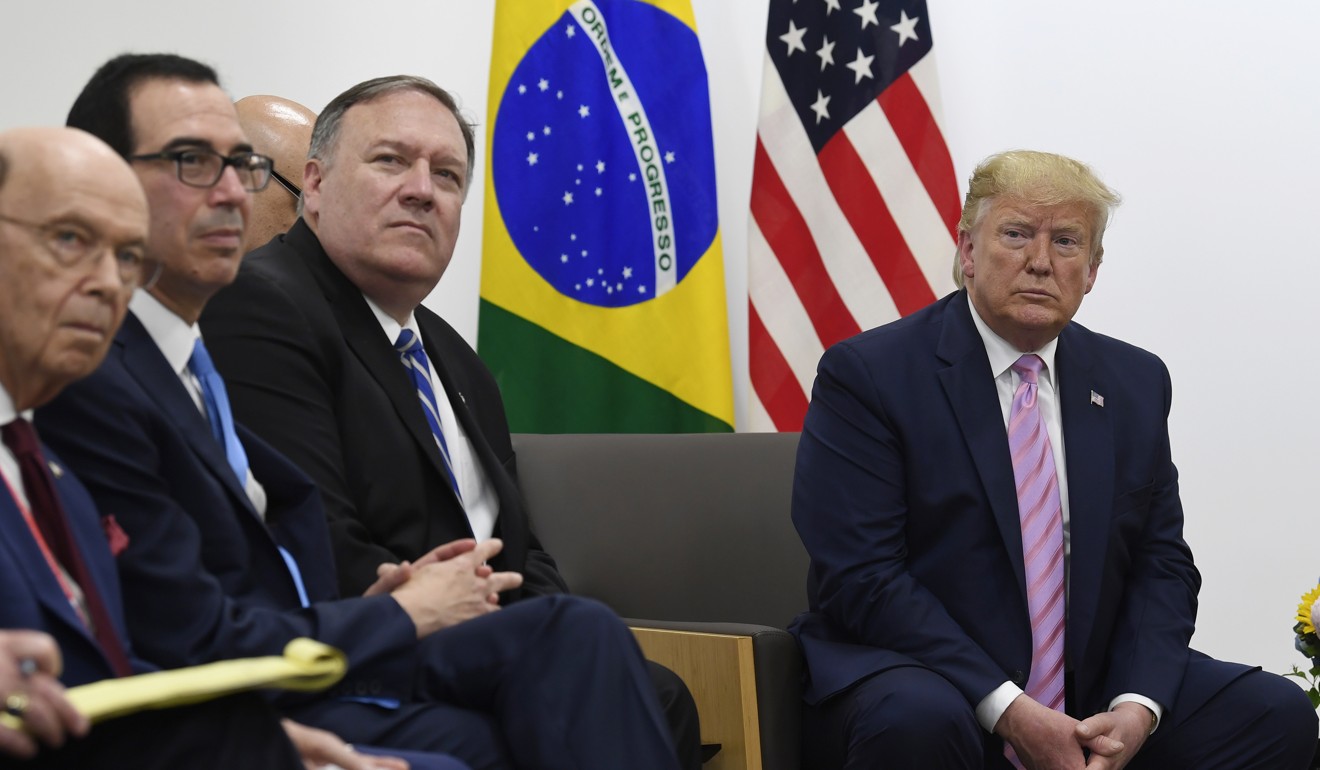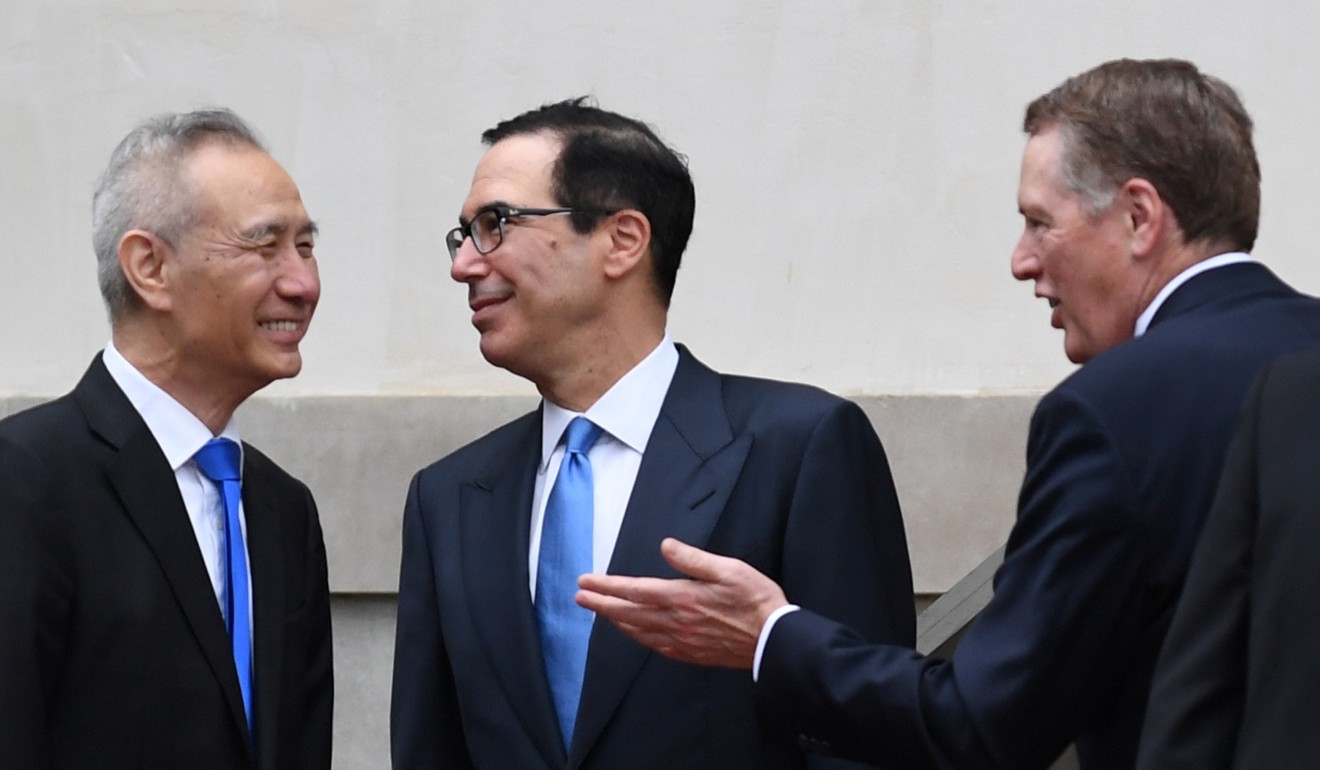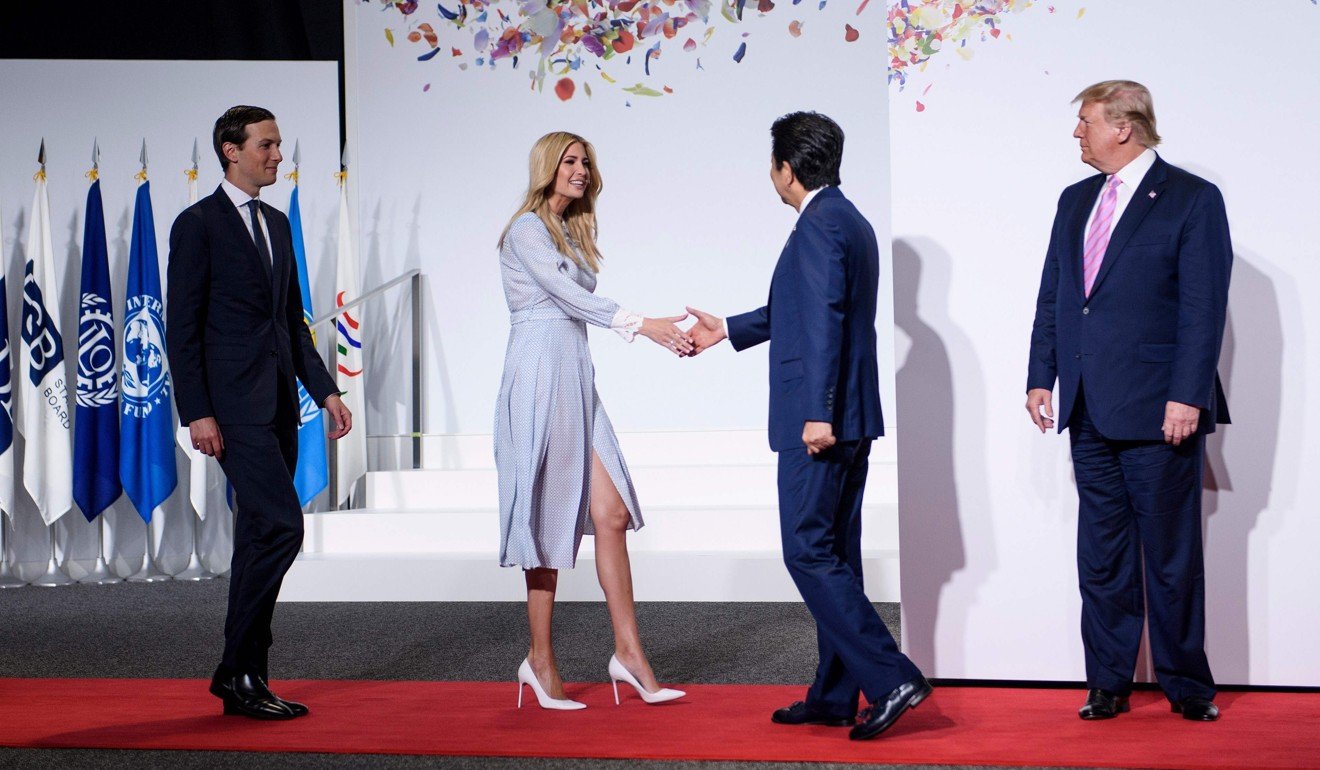
Tensions mount ahead of Donald Trump’s summit meeting with Xi Jinping as China hawks circle in Osaka
- Presidents are known for having a good personal relationship, but there is little love lost between China’s state media and US officials
- Beijing expected to name an unchanged line-up for negotiating team in show of solidarity and strength, analyst says
As the countdown begins to the high-stakes summit between Chinese President Xi Jinping and his US counterpart Donald Trump on Saturday in Japan, speculation is rising as to who might be in the room when the leaders of the world’s two largest economies sit down together.
While the agreement to hold the meeting – on the sidelines of the G20 summit in Osaka – is a clear sign of the presidents’ intent, how well the talks actually go is likely to depend on the atmosphere around the negotiating table. And that could hinge not on the interaction between Xi and Trump, but between the members of their respective teams.
While neither side has made public who will be accompanying their leaders, Chinese state media made it clear this week what it thought of at least one of the possible US candidates.
A commentary piece published by tabloid newspaper Global Times on Tuesday took the unusual step of attacking US Secretary of State Mike Pompeo by name, describing him as “the source of all chaos” in international affairs and a “crazy” person who is not worthy of any respect.
“Do not be kind to him just because he is the US secretary of state,” the article said. “He has tainted the glorious role of the diplomat. His behaviour should be despised and rebuked by the global diplomatic community.”
At a press conference on Thursday, Chinese foreign ministry spokesman Geng Shuang continued the attack, saying he did not know what “evil spell he [Pompeo] was under”, after the official publicly criticised China’s Belt and Road Initiative.
The latest hostilities are in marked contrast to the prevailing mood when Xi and Trump last met, on the sidelines of the G20 summit in Buenos Aires in December, when Beijing largely refrained from attacking any of Trump’s aides by name.

If Pompeo’s presence in the meeting room is likely to raise the temperature in Osaka, another US official who could ramp it up still further is Peter Navarro, the White House trade policy adviser and a prominent China hawk.
The author of Death by China: Confronting the Dragon – A Global Call to Action, is a long-standing critic of China’s economic aggression against the US and a staunch supporter of levying tariffs on its products.
In an interview with CNN earlier this month, Navarro rejected suggestions that the US would bear the burden of imposing tariffs on Chinese imports. In a separate interview with American broadcaster Fox he said Washington’s tariffs were impeding the Chinese economy.
Another China hawk in Trump’s G20 entourage is his national security adviser, John Bolton, who has openly stated that China, along with Russia, North Korea, Iran and Venezuela, is trying to sow “disinformation” that there is discord within the Trump administration.

Another possible member of the team is Matthew Pottinger, the top official for Asia at the US National Security Council, who sat on the backbench during the Xi-Trump talks in Buenos Aires.
The fluent Mandarin speaker – who was once physically assaulted by a Chinese government thug while working as journalist in Beijing in the early 2000s – said in a speech at the US embassy in Beijing in October that “we at the Trump administration have updated our China policy to bring the concept of competition to the forefront”.
On Friday, the mouthpiece of the Chinese Communist Party, People’s Daily, ran a commentary saying that some people in the US were trying to exert pressure on China.
While it mentioned no names, it said: “These US people are a headache for all countries around the world. But who is afraid of them? Certainly not China.”
Two officials who are almost certain to be at Trump’s side on Saturday are US trade representative Robert Lighthizer and US Treasury Secretary Steven Mnuchin, who have jointly led the US negotiating team since day one.
While they have been tasked with reaching a deal with China, neither has shown much willingness to cede any ground. When Beijing issued a white paper blaming the US for the negotiations faltering in May, their offices issued a joint statement saying there would be no deal without an enforcement mechanism to ensure Beijing stuck to its promises.

Despite the possible presence of so many hard hitters, Shen Jianguang, chief economist at JD Digital in Beijing and a veteran China watcher, said there was nothing to stop the two presidents agreeing to another trade war truce, as they did in Argentina.
Saturday’s meeting was not about the details of a trade deal, he said, but just about agreeing to try again to reach one.
“The Osaka summit is all about getting the stalled negotiations back on track,” he said.
Trump’s daughter, Ivanka, and son-in-law Jared Kushner, have also travelled with the president to Osaka but it is not known if they will be involved in his meeting with Xi.
Kushner was present when the leaders last met, but the couple play only an informal role in diplomacy and are not directly involved in trade policy.

As for the Chinese side, Xi is accompanied in Osaka by several senior diplomats and trade officials, including Vice-Premier Liu He, the leader of Beijing’s negotiating team.
Also in Japan are China’s top diplomat Yang Jiechi, Foreign Minister Wang Yi, economic planning chief He Lifeng, central bank governor Yi Gang and Finance Minister Liu Kun.
China’s other trade negotiators, including commerce vice-minister Wang Shouwen, arrived in Osaka before Xi’s official delegation. Wang has been involved in trade negotiations with the US from their start and his presence in Osaka showed that working-level talks between China and the US could take place in tandem with the G20 schedule.
Shen said China’s decision to stick with familiar faces, including keeping the trade talks team unchanged despite the recent blip, was a “good strategy” as it gave a sense of consistency.
“China can make a very clear stand so that the US won’t wrongly think it will make compromises,” he said.


